| Workable Solutions | Step-by-step Troubleshooting |
|---|---|
| Fix 1. Restart Your Mac | Go to "Apple logo" on Mac. Go to the "Restart"...Full steps |
| Fix 2. Run a Virus Scan | Go to the "Apple" menu on Mac. Go to the "System Preferences"...Full steps |
| Fix 3. Check Internet Connection | Go to the Mac Wi-Fi connection. Go to the Mac Wi-Fi connection...Full steps |
| Fix 4. Check Your RAM | Go to the "Apple menu". Click on "About...Full steps |
| Other Practical Solutions | Check the Storage Space on Your Mac > Boot Your Mac in Safe Mode...Full steps |
macOS Ventura Update Failed with PKDownloadError Error
Mac devices are supported by significant macOS versions and sub-version updates with improved features for professionals, businesses, students, etc. All Mac devices are compatible with these updates and remain a simple process that can be completed over a seamless internet connection. However, Mac users may face issues like macOS 13 Ventura upgrade failed errors for different reasons.
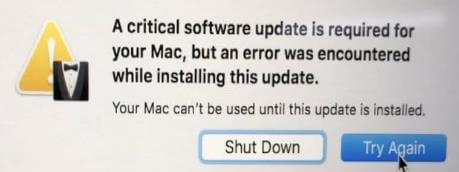
Some of the common Ventura updates failed error messages:
- App or system crashes
- Wi-Fi or Bluetooth not working
- Ventura is not able to boot
- Ventura set-up issues
- Failed Ventura installation
- Ventura stuck download
If you're facing any of these Ventura updated failed error messages, you don't have to worry, as you can fix macOS 13 Ventura upgrade failed issue with some quick fixes only. Let us move to these fixes now.
7 Ways to Fix macOS 13 Ventura Update Failed
After understanding the macOS 13 Ventura upgrade failed error, it is easy to learn that it can be due to different reasons based on your Mac state. Hence, it all comes down to the different fixes for macOS 13 Ventura update error which can be easily used without assistance.
macOS Ventura update supported system
Before moving to the fixes, knowing if your Mac can update to macOS Ventura is essential. The Ventura update is possible for the following Mac systems only:
- Mac Studio (2022)
- MacBook Air (2018 and later), MacBook (2017), and MacBook Pro (2017 and later)
- Mac mini (2018 and later), Mac Pro (2019 and later)
- iMac (2017 and later), iMac Pro (2017)
Let us move to our simple and effective solutions list for the Ventura update failed error:
Fix 1. Restart Your Mac to Fix macOS 13 Ventura Update Failed
The first and easiest solution for macOS Ventura update failed error can be quick restarting the Mac system. It can handle software glitches and file systems waiting for a reboot while restarting the system for a quick update. The quick steps for the same are:
- Go to "Apple logo" on Mac.
- Go to the "Restart" option.
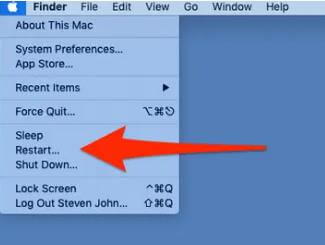
Let your Mac restart and wait until you can download macOS 13 Ventura update from App Store.
Fix 2. Run a Virus Scan to Let the Update Begin Again
The second option to complete the macOS 13 Ventura update is to run the virus scan to restart the update. It eliminates the interaction of malware or any bugs while updating to macOS 13 Ventura. The quick steps for the same are:
Step 1. Go to the "Apple" menu on Mac.
Step 2. Go to the "System Preferences" and the "Security and Privacy" settings.
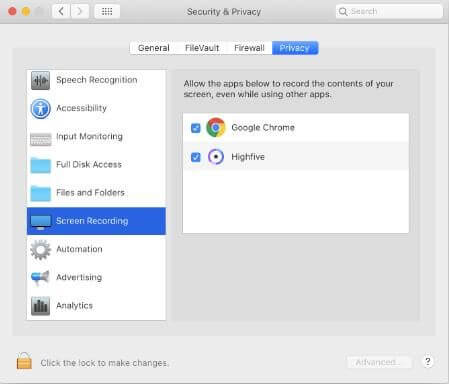
Step 3. Unlock the "Preference settings" and ensure Mac can download updates from the official store only.
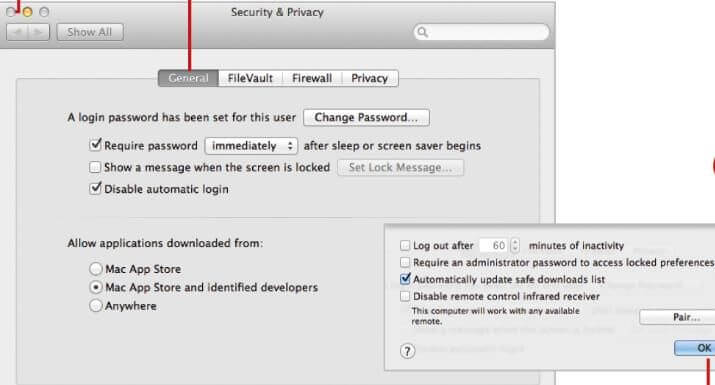
Fix 3. Check Internet Connection: Turn off/ Turn on WiFi
You may have been thinking of the worst-case scenario for your Mac facing the Ventura update failed error, but it could have been due to poor Wi-Fi connection only. Seamless internet connectivity is necessary while downloading any software update, including macOS 13 Ventura.
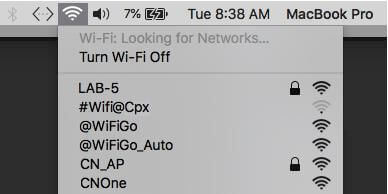
The quick steps for the same are:
- Go to the Mac Wi-Fi connection
- Turn off Wi-Fi once and restart the connection.
- Try downloading the macOS 13 Ventura upgrade again with good internet.
Fix 4. Check Your RAM (Capacity & Memory)
The macOS 13 Ventura upgrade failed error can be due to the limited RAM availability on your Mac device. Hence, checking your Mac system's RAM capacity and memory becomes essential.
The quick steps for the same are:
- Go to the "Apple menu".
- Click on "About This Mac".
- Go through the memory details of your Mac.
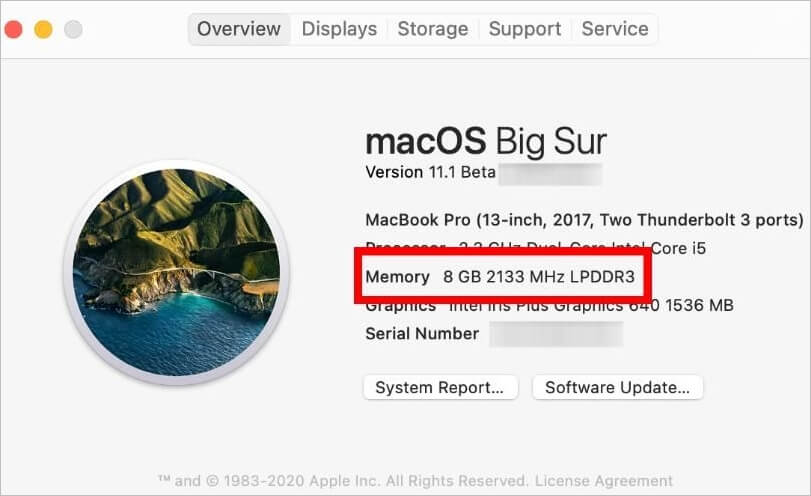
Fix 5. Check the Storage Space on Your Mac
Like all other updates, checking the available storage space on your Mac before starting the macOS 13 Ventura update is essential. The quick steps to check the available storage space on your Mac device are:
Step 1. Go to the "Apple" icon.
Step 2. Go to the "About This Mac" option.
Step 3. Go to the "Storage" option from the top center menu.

You need at least 25 GB of memory for downloading and installing the macOS 13 Ventura update.
Step 4. Go to the "Manage" option to check files, apps, and other options to delete and create enough space for macOS 13 Ventura update.

Fix 6. Boot Your Mac in Safe Mode to Upgrade
Another solution to the macOS 13 Ventura upgrade failed error can be due to boot issues. So, you need to boot your Mac in safe mode to upgrade to macOS 13 Ventura upgrade. The quick steps for the same are:
- Go to the "Apple" menu.
- Go to the "Shut down" menu.
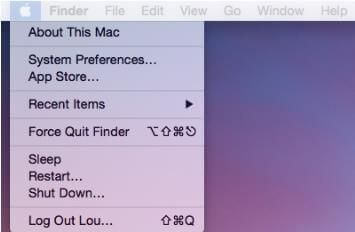
- Wait for 10 seconds and press the power button again.
- Press and hold down the "Shift" key and release it when the "Apple logo" appears.
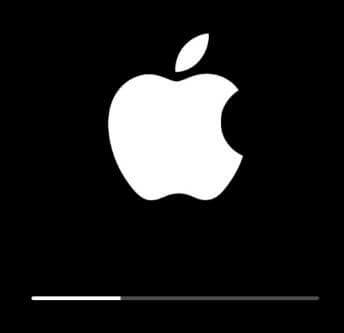
Now re-download the update.
Fix 7. Re-Download and Install macOS 13 Ventura
Last but not least is the re-downloading and installing macOS 13 Ventura update. It is easy for the users to connect to the official Apple store and complete the process. Follow the steps to install the macOS 13 Ventura.
Step 1. Go to support.apple.com on the Mac web browser.
Step 2. Select the update from the available options.

Step 3. Go to "Download" and select "Save File," followed by "OK," and open the installed file.
Step 4. Double-click on the install package and click on "Continue" to all the following prompts.
Wait for a few moments until all the updates are installed. Reboot the system to check the correct updates.
Bonus Tips: How to Recover Data After macOS Update
It is easy to go through the top fixes mentioned above and eliminate the macOS 13 Ventura upgrade failed error. While it is easy to fix the Ventura upgrade issues on macOS devices, users often feel skeptical about data loss. No more issues in managing data loss when it comes to a tool like EaseUS Data Recovery Wizard Mac.
EaseUS Data Recovery Wizard Mac is a highly professional Mac software for recovering data from accidental deletion, trash bin, or other reasons. Beginners and professionals can quickly select a hard drive and scan the deleted files to preview recoverable files. It can retrieve data like emails, documents, music files, photos, etc.
EaseUS Data Recovery Wizard Mac functions:
- It can solve data loss issues from Mac-based devices like SSD, Time Machine backup drives, memory cards, cameras, USB drives, SD cards, fusion drives, HDDs, etc.
- It can recover missing photos after the macOS Ventura update, human errors, unexpected shutdown, hardware failure, system crashes, virus attacks, macOS update formatting, deleting without backup, etc.
- It can recover deleted files on macOS Ventura, Big Sur, Monterey, Catalina, and more.
- It can recover data to cloud storage like memory cards, USB, hard drives, OneDrive, GoogleDrive, Dropbox, etc.
Follow the steps below to recover Mac data after the update:
Note: You can create a backup by clicking the "Disk Backup" on the left first. When the disk is damaged or the data on the disk is accidentally deleted or lost, you can get the data back from the backup image.
Step 1. Select the location
Select the disk where you lost data after updating to macOS Sonoma/Ventura/Monterey/Big Sur. Then, click "Search for lost files".

Step 2. Find lost data after the scan
EaseUS Data Recovery Wizard for Mac will immediately scan your selected disk volume and display the scanning results on the left pane. Use the file type and file path to find wanted data on Mac.

Step 3. Recover data after macOS update
Select the target files that were unknowingly lost during or after the update and click the "Recover" button to get them all back.

Conclusion
Hence, no more confusion for Mac users when it comes to fixing macOS 13 Ventura upgrade failed errors, irrespective of their expertise level. Beginners and professionals can understand typical Venture update failed error messages and all about them. It becomes easy to use different fixes after understanding about error first.
Starting with a quick Mac restart, running the virus scan, checking the internet connection, or checking RAM, users can go through the quick fixes in detail. Further, users can check storage space on their Mac, boot Mac in safe mode, and re-downloading or install macOS 13 Ventura update. Not to miss is using an effective tool like EaseUS Data Recovery Wizard Mac to restore lost data on Mac.
Mac Won't Update FAQs
It is easy to understand all the Ventura failed updates and quick fixes. However, users may face specific questions while handling macOS 13 Ventura update for their Mac devices. So, no need to look here and there when you can go for the quick list of the top questions related to Ventura updates which are:
1. How to fix macOS 10.13/10.13.4 High Sierra update failure?
It is easy to fix macOS High Sierra update failure based on the reasons in the following ways:
To fix macOS 10.13/10.13.4, High Sierra downloaded but won't install failure:
- Go to "Launchpad" and delete the "Install macOS Sierra" file.
- Reboot your Mac and retry downloading macOS 10.13/10.13.4 High Sierra update.
- Go to "Apple menu", select "App Store", and click "Update".
To fix macOS 10.13/10.13.4, High Sierra fails to install or freezes while installing failure:
- Start by disabling or uninstalling any active antivirus on Mac.
- Install macOS High Sierra with a reliable internet connection in safe mode.
- Restart the system and boot it in Safe Mode.
- Try installing macOS 10.13/10.13.4 High Sierra update now.
2. Why does my macOS update keep failing?
It is necessary to keep the macOS updated to enjoy the benefits of enhanced security and bug-free functionality. However, users often complain of failed macOS updates due to a poor internet connection, Apple server issues, lack of disk space, etc. Hence, knowing the macOS update failing reasons is crucial to finding the correct fixes.
3. What version of macOS can I upgrade to?
It is recommended to go for the latest version of macOS while upgrading your Mac to ensure smooth functioning and seamless interoperability. The latest version of macOS is Big Sur macOS 11.6.8, released on July 20, 2022, and macOS Catalina 10.15.7, released on July 20, 2022.
4. Why is macOS Big Sur not installing?
Users facing macOS Big Sur problems which can be due to different reasons:
- Mac system will be outdated if it is not installing macOS Big Sur. Hence, checking if your Mac is compatible with the Big Sur update is necessary.
- An unreliable internet connection can be the reason for faulty macOS Big Sur installation. Hence, it is vital to go for an Ethernet connection.
- Big Sur requires at least 15GB of space on the Mac system. Hence, lack of space in the system can be the reason for failed Big Sur update.
- Connecting with Apple servers while downloading the Big Sur update is essential. Hence, it is necessary to check the live status of servers to check the Apple server's connectivity.
Was This Page Helpful?
Cedric Grantham is a senior editor and data recovery specialist of EaseUS. He mainly writes articles and how-to tips about data recovery on PC and Mac. He has handled 10,000+ data recovery cases and is good at data recovery of NTFS, FAT (FAT32 and ExFAT) file systems, and RAID structure reorganization.
Brithny is a technology enthusiast, aiming to make readers' tech lives easy and enjoyable. She loves exploring new technologies and writing technical how-to tips. In her spare time, she loves sharing things about her game experience on Facebook or Twitter.
Related Articles
-
How to Solve Sound Not Working on Laptop |5 Troubleshooting Tips for Laptop
![author icon]() Daisy/Jan 11, 2024
Daisy/Jan 11, 2024 -
[Fixed] Unable to Reset Your PC. A Required Drive Partition Is Missing
![author icon]() Jean/May 20, 2024
Jean/May 20, 2024 -
(Top 8 Ways) How to Fix Windows 10 Black Screen with Cursor
![author icon]() Jerry/Jan 11, 2024
Jerry/Jan 11, 2024 -
Any Tools to Check SD/MicroSD Cards Health? Sure!
![author icon]() Sherly/May 28, 2024
Sherly/May 28, 2024